 Do you have a Diabetes? If not, it is an illness for a group of metabolic disorders characterized by prolonged high blood glucose levels. Diabetes affects almost 400 million people worldwide, resulting in up to five million deaths per year–and its prevalence is rising. Substantial evidence indicates that cannabis may prevent and treat the disease.
Do you have a Diabetes? If not, it is an illness for a group of metabolic disorders characterized by prolonged high blood glucose levels. Diabetes affects almost 400 million people worldwide, resulting in up to five million deaths per year–and its prevalence is rising. Substantial evidence indicates that cannabis may prevent and treat the disease.
Preventative
 Diabetes is associated with high levels of fasting insulin and insulin resistance, as well as low levels of high-density lipoprotein cholesterol (HDL-C). In 2013, the results of a five-year study into the effects of cannabis on fasting insulin and insulin resistance were published in the American Journal of Medicine. Of the 4,657 respondents, 2,554 had used cannabis in their lifetime (579 were current users and 1,975 were past users) and 2,103 had never used the drug.
Diabetes is associated with high levels of fasting insulin and insulin resistance, as well as low levels of high-density lipoprotein cholesterol (HDL-C). In 2013, the results of a five-year study into the effects of cannabis on fasting insulin and insulin resistance were published in the American Journal of Medicine. Of the 4,657 respondents, 2,554 had used cannabis in their lifetime (579 were current users and 1,975 were past users) and 2,103 had never used the drug.
The researchers found that current users of cannabis had 16% lower fasting insulin levels than respondents who had never used cannabis, as well as having 17% lower levels of insulin resistance and higher levels of HDL-C. Respondents who had used cannabis in their lifetime but were not current users showed similar but less pronounced associations, indicating that the protective effect of cannabis fades with time.
The researchers also ran analyses on the data that excluded individuals diagnosed with diabetes. Even after excluding diabetics, current cannabis users were found to exhibit reduced fasting insulin and insulin resistance levels, indicating that cannabis can help prevent the occurrence of diabetes as well as controlling symptoms in diagnosed cases.
Lowers insulin resistance
Insulin resistance (IR) is a condition that causes cells to reject the normal mechanism of insulin, a hormone that is produced by the pancreas and is fundamental to the regulation of glucose metabolism. IR is associated with type 2 diabetes; in type 1 diabetes, the body is unable to produce insulin, while in type 2, insulin production is unaffected but the cells are unable to process it. When cells become insulin-resistant, they are unable to absorb the glucose needed to supply them with energy, and the unused glucose builds up in the bloodstream–leading to hyperglycemia.
The authors of the 2013 study found that current users of cannabis had a mean IR of 1.8, compared to 2.2 for past users and 2.5 for those that had never used cannabis. Current cannabis users were also found to have lower levels of blood glucose compared to past users and non-users. Current users had mean blood glucose levels of 99.7 mg/dL, compared with 100.6 mg/dL for past users and 103.5 mg/dL for non-users. However, the precise mechanism via which cannabinoids exert their effects on IR has thus far not been determined.
Helps to prevent obesity
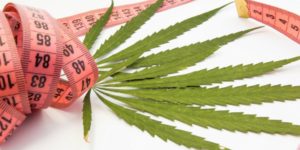 Obesity, high body mass index (BMI) and large waist circumference are all linked to diabetes risk. Various studies have been conducted on the relationship between cannabis use and BMI, with conflicting results. A 2005 study on young adults found that cannabis use was not associated with changes in BMI, whereas two large national surveys found lower BMI and decreased levels of obesity in cannabis users despite higher-than-average daily consumption of calories. The 2013 study found that current cannabis use was associated with smaller waist circumferences than in past or non-users.
Obesity, high body mass index (BMI) and large waist circumference are all linked to diabetes risk. Various studies have been conducted on the relationship between cannabis use and BMI, with conflicting results. A 2005 study on young adults found that cannabis use was not associated with changes in BMI, whereas two large national surveys found lower BMI and decreased levels of obesity in cannabis users despite higher-than-average daily consumption of calories. The 2013 study found that current cannabis use was associated with smaller waist circumferences than in past or non-users.
While the mechanism underlying the complex relationship between the endocannabinoid system, obesity and diabetes has not been fully established, a 2012 study demonstrated that obese rats lost significant weight and experienced an increase in pancreas weight after exposure to organic cannabis extract. The increase in the weight of the pancreas indicates that the beta cells of the pancreas (which are responsible for the production of insulin) are protected by the presence of cannabinoids–in type 1 diabetes, the beta cells are destroyed by an autoimmune response, so providing protection to them may help to control the disease.
May treat diabetes-induced neuropathy
 People with diabetes often experience nerve disorders as a result of their disease. Nerve damage often affects the peripheries such as the hands and feet, but may occur in any organ or region of the body. The damage may be symptomless, but in many cases, pain, tingling and numbness accompany the disorder. As with many f0rms of nerve pain, diabetic neuropathy can be hard to treat with conventional analgesics; however, there is evidence to indicate that cannabis may have a role to play here too.
People with diabetes often experience nerve disorders as a result of their disease. Nerve damage often affects the peripheries such as the hands and feet, but may occur in any organ or region of the body. The damage may be symptomless, but in many cases, pain, tingling and numbness accompany the disorder. As with many f0rms of nerve pain, diabetic neuropathy can be hard to treat with conventional analgesics; however, there is evidence to indicate that cannabis may have a role to play here too.
A study published in 2009 investigated the antinociceptive (pain-reducing) effects of cannabidiol extract in cases of diabetes-induced neuropathy in rats. The authors found that repeated administration of CBD extract “significantly relieved” mechanical allodynia (painful response to non-painful stimuli) and restored normal perception of pain without inducing hyperglycemia. The treatment was also found to protect the liver against oxidative stress (which is believed to be a major contributing factor to developing neuropathy) and increase levels of nerve growth factor to normal levels.
However, studies on humans have thus far yielded less positive results. Also in 2009, a randomized controlled trial investigated the ability of GW Pharmaceuticals’ Sativex spray to ameliorate the symptoms of diabetes-induced peripheral neuropathy. 30 subjects were administered with either Sativex or placebo; pain scores improved significantly across the board, but the effect of Sativex was not found to be significantly greater than that of the placebo.
May treat diabetic retinopathy
 Up to 80% of diabetes patients that have had the disease for over a decade acquire a complication known as diabetic retinopathy (DRP), in which the cells of the retina are progressively damaged. This condition is responsible for approximately 12% of new cases of blindness each year in the USA.
Up to 80% of diabetes patients that have had the disease for over a decade acquire a complication known as diabetic retinopathy (DRP), in which the cells of the retina are progressively damaged. This condition is responsible for approximately 12% of new cases of blindness each year in the USA.
DRP is associated with glucose-induced breakdown of the blood-retinal barrier, a network of tightly-packed cells that prevent unwanted substances in the blood from entering retinal tissue. This breakdown causes neural tissue to be exposed to neurotoxins, as well as increasing the chance of bleeding within the retina.
It is thought that the pro-inflammatory immune response and oxidative stress processes have a key role to play in the breakdown of retinal cells–and there is evidence that cannabidiol, with its known ability to combat both oxidative stress and inflammation, may be useful in treating the disorder. In a 2006 study published in the American Journal of Pathology, diabetic rats were administered with CBD and tested to determine the rate of retinal cell death. It was shown that treatment with CBD significantly reduced oxidative stress and neurotoxicity–including levels of tumor necrosis factor-a, a substance that is known to be involved in the inflammatory response–and protected against retinal cell death and the breakdown of the blood-retinal barrier.
 A warm Congratulations Montana! The decision expands the state’s medical marijuana laws. Now, Licensed medical marijuana providers can serve more than three patients at a time. In addition to that, it now allows them to hire employees to grow, dispense and distribute medical marijuana. It is not legal to grow marijuana at home but it is a step in the right direction.
A warm Congratulations Montana! The decision expands the state’s medical marijuana laws. Now, Licensed medical marijuana providers can serve more than three patients at a time. In addition to that, it now allows them to hire employees to grow, dispense and distribute medical marijuana. It is not legal to grow marijuana at home but it is a step in the right direction.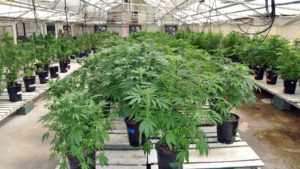 Montana makes it easy for anyone to grow marijuana. You simply need to be a patient, or know a patient to grow for. If, for some reason, you cannot meet one of these qualifications, you risk a felony with up to 10 years in jail. It’s hard to imagine why anyone would do that when it is very easy to become a patient or grow for a patient, yet anything is possible.
Montana makes it easy for anyone to grow marijuana. You simply need to be a patient, or know a patient to grow for. If, for some reason, you cannot meet one of these qualifications, you risk a felony with up to 10 years in jail. It’s hard to imagine why anyone would do that when it is very easy to become a patient or grow for a patient, yet anything is possible.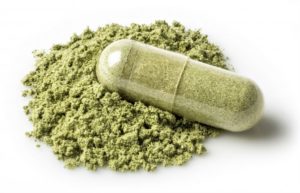 Montana has a medical marijuana program, but it is not decriminalized. This means those caught with marijuana could get into serious trouble if they are not a medical patient. Not only is Montana weed growing a felony without medical need, looking like you intend to sell it is also a felony. Montana has mandatory jail time sentences for those convicted of selling weed and misdemeanor charges for all forms of possession. Those arrested for possession (that are not patients) will be required to take a drug education course.
Montana has a medical marijuana program, but it is not decriminalized. This means those caught with marijuana could get into serious trouble if they are not a medical patient. Not only is Montana weed growing a felony without medical need, looking like you intend to sell it is also a felony. Montana has mandatory jail time sentences for those convicted of selling weed and misdemeanor charges for all forms of possession. Those arrested for possession (that are not patients) will be required to take a drug education course.
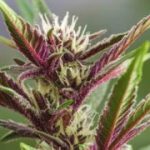
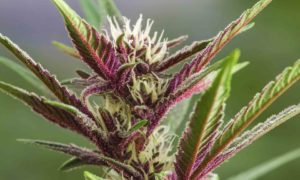


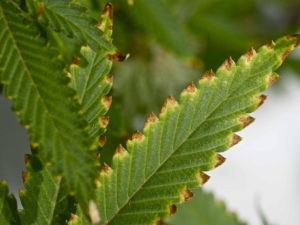
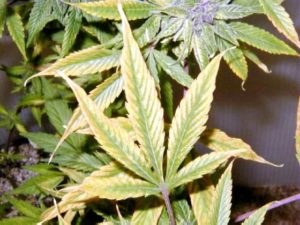
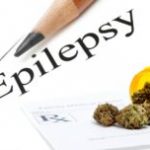
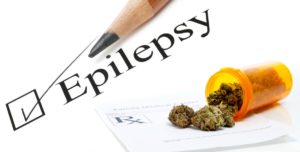 Little did everyone knows but cannabis has been used as a treatment for pediatric epilepsy for decades though much of the public conversation started with the story of Charlotte Figi, a 6-year-old Dravet Syndrome sufferer whose seizures were greatly reduced after taking large doses of cannabidiol, or CBD, derived from the cannabis plant.
Little did everyone knows but cannabis has been used as a treatment for pediatric epilepsy for decades though much of the public conversation started with the story of Charlotte Figi, a 6-year-old Dravet Syndrome sufferer whose seizures were greatly reduced after taking large doses of cannabidiol, or CBD, derived from the cannabis plant. Epilepsy is a neurological disorder characterized by recurrent, unprovoked seizures. It may be caused by brain injury, family history or other unknown reasons and can affect people of all ages. Though many types of epilepsy can be controlled with medication (albeit with unfavorable side effects half the time), some sever forms of epilepsy like Dravet Syndrome (which is caused by a gene mutation in the brain) are less receptive to treatment. Children with treatment-resistant epilepsy often also suffer have developmental disabilities, sensitivity to infection, frequent triggers (such as light, stress or emotional situations), growth and nutrient problems and reduced mobility.
Epilepsy is a neurological disorder characterized by recurrent, unprovoked seizures. It may be caused by brain injury, family history or other unknown reasons and can affect people of all ages. Though many types of epilepsy can be controlled with medication (albeit with unfavorable side effects half the time), some sever forms of epilepsy like Dravet Syndrome (which is caused by a gene mutation in the brain) are less receptive to treatment. Children with treatment-resistant epilepsy often also suffer have developmental disabilities, sensitivity to infection, frequent triggers (such as light, stress or emotional situations), growth and nutrient problems and reduced mobility. Cannabis’s effectiveness in treating epilepsy has been well documented. Aside from Charlotte Figi, numerous others have experienced a significant drop in epileptic symptoms shortly after beginning cannabis therapy. Though relapse seems common a few days after ceasing cannabis medication, one study shows continuous use of cannabis to significantly improve both motor and cognitive functions in epilepsy patients. The study found CBD to be most effective when used in conjunction with other anti-seizure medications.
Cannabis’s effectiveness in treating epilepsy has been well documented. Aside from Charlotte Figi, numerous others have experienced a significant drop in epileptic symptoms shortly after beginning cannabis therapy. Though relapse seems common a few days after ceasing cannabis medication, one study shows continuous use of cannabis to significantly improve both motor and cognitive functions in epilepsy patients. The study found CBD to be most effective when used in conjunction with other anti-seizure medications. It’s difficult for some parents to attain the medical-grade cannabis they need to treat their children’s epilepsy because of limited research and thus the inability of physicians to recommend it. Anecdotal evidence supporting cannabis as a treatment for epilepsy is abundant, however, and has inspired thousands of parents across the nation to push for more lenient medical marijuana laws. In an article published by NBC News, one parent explained that:
It’s difficult for some parents to attain the medical-grade cannabis they need to treat their children’s epilepsy because of limited research and thus the inability of physicians to recommend it. Anecdotal evidence supporting cannabis as a treatment for epilepsy is abundant, however, and has inspired thousands of parents across the nation to push for more lenient medical marijuana laws. In an article published by NBC News, one parent explained that:




